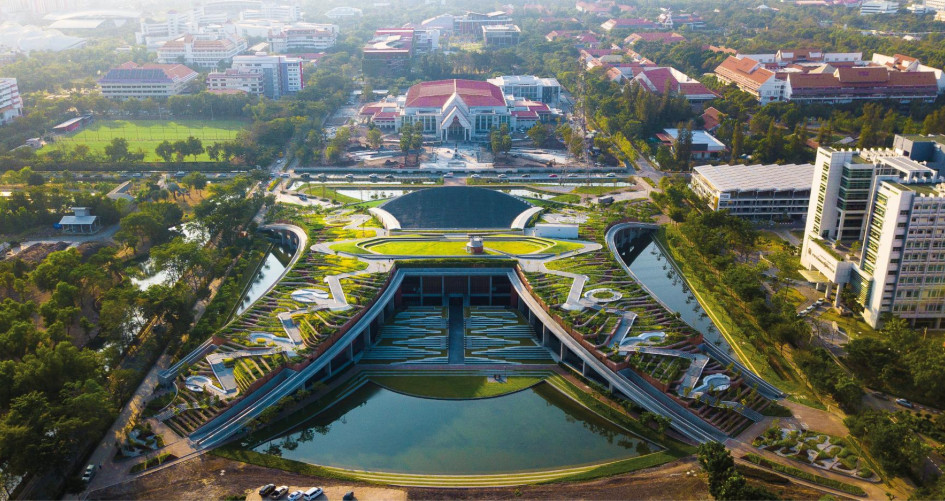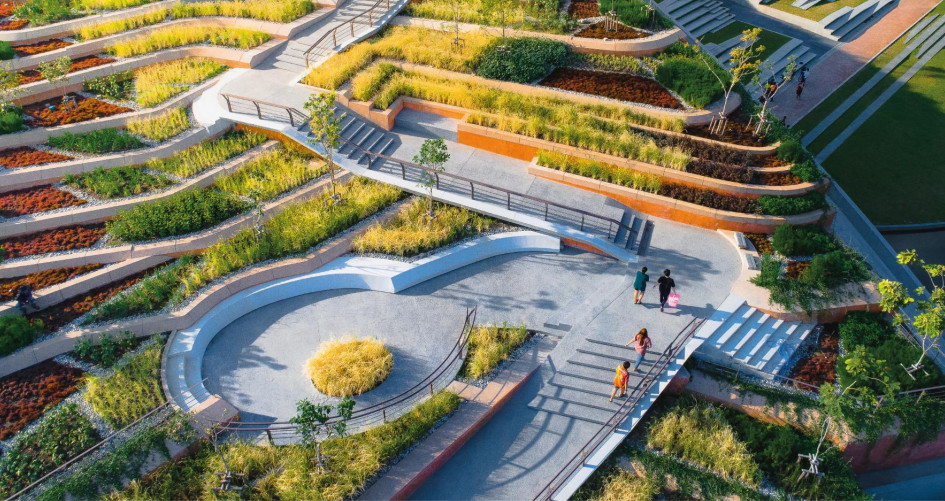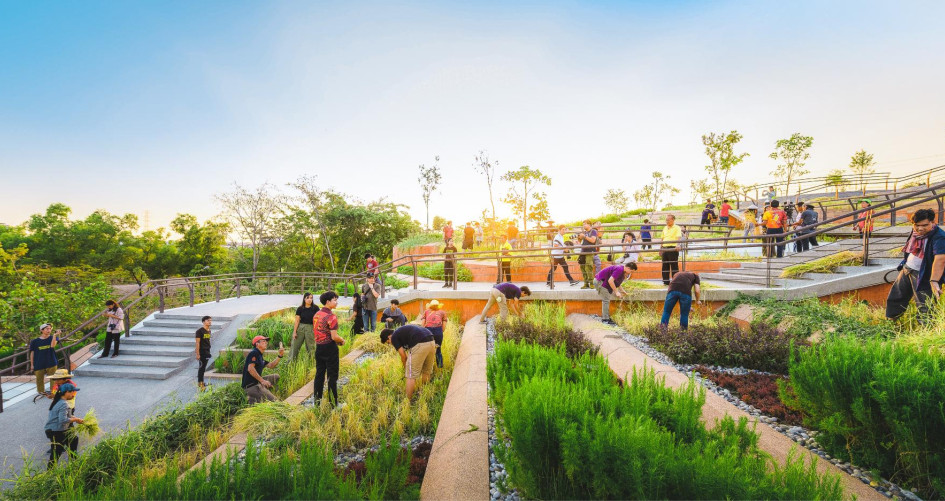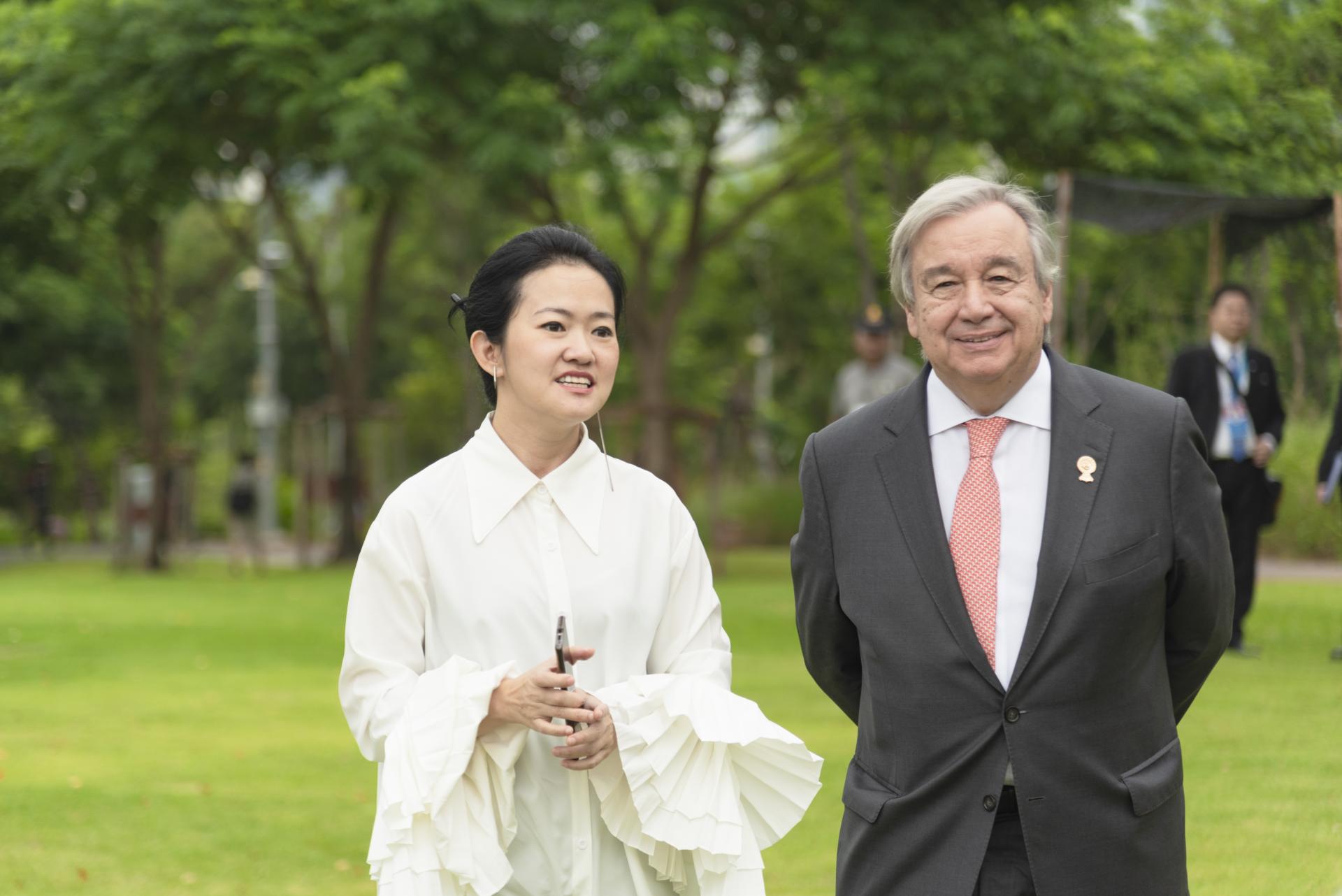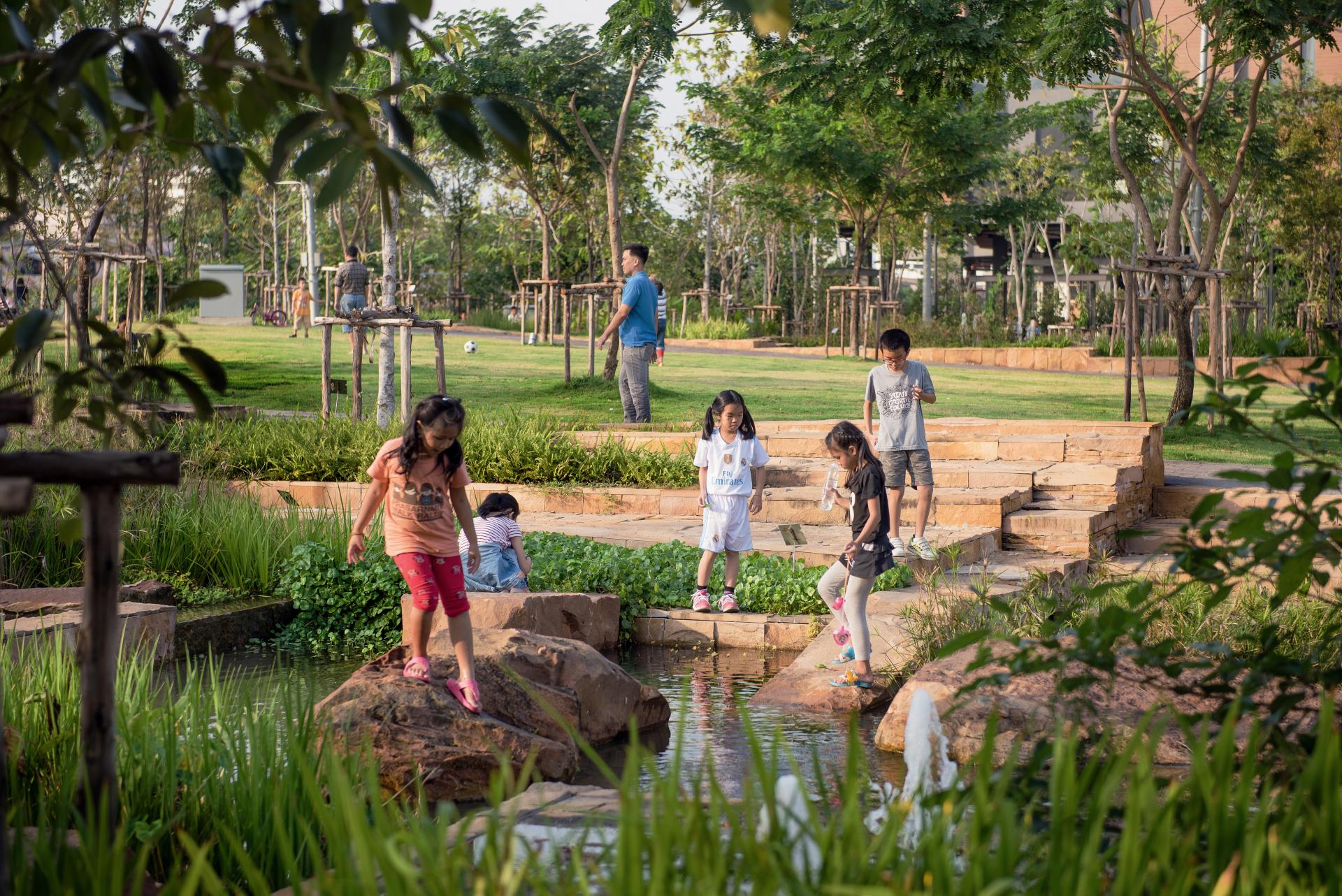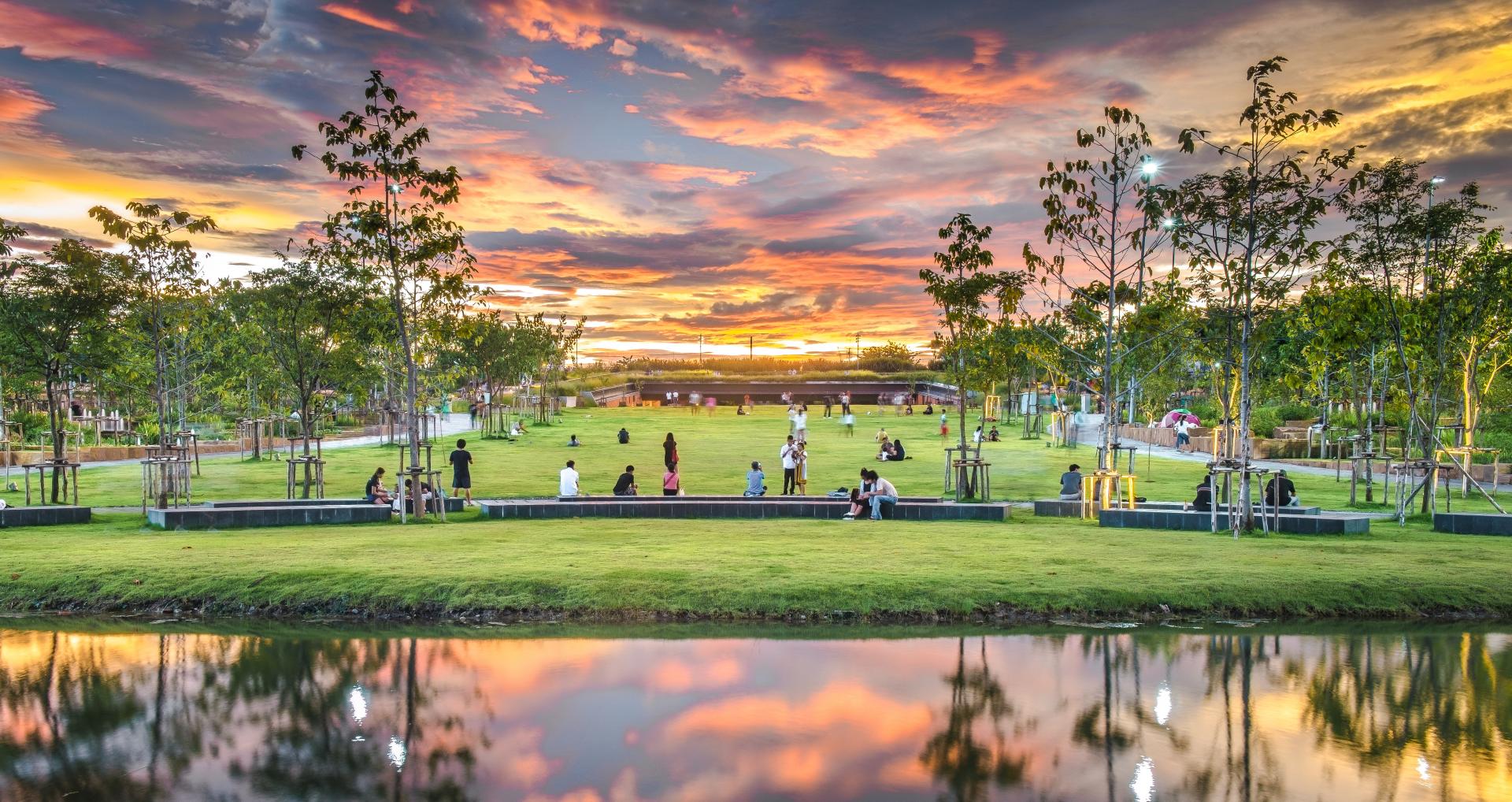As a landscape architect, Kotchakorn Voraakhom established the Landprocess and Porous City Network to build innovative landscape solutions for urban resilience in Bangkok. Her firm has equipped the city with public green space and nature-based solutions to increase the city’s resilience, reduce flood risk and improve the well-being of its citizens. For the first time in 30 years of rapid urban development, 11 acres of property in the heart of Bangkok was transformed into a public park.
Opened in 2017, Chulalongkorn Centenary Park is the first critical piece of green infrastructure in Bangkok to reduce urban flood risk. With on-site water management, the park can collect, treat, and hold up to one million gallons of water, alleviating overwhelmed public sewage during heavy rainfall. In addition to being Bangkok’s first park in 30 years, it was also the first city public park led by a female landscape architect.
Key facts
- By sitting on a 3-degree angle, Chulalongkorn Centenary Park collects rainwater from its green roof, which can slow down runoff up to 20 times more than regular concrete surfaces.
- Some of the water is stored in underground tanks and the rest is sent through a series of ecological components, including a detention lawn and wetlands which filter, aerate, and purify the water. Finally, the water flows down to the retention pond--capable of doubling in size to handle severe floods--where it completes the cycle, now available for its irrigation and distribution to surrounding facilities.
- The Thammasat Urban Rooftop Farm, now Asia’s biggest, repurposed 236,806 sq. ft. of abandoned concrete roof space to grow crops.
The challenge
As climate change causes an increase in sea level rise, storm surges, and unexpectedly heavy rainfall, low-lying cities across the globe are bracing for urban flooding disasters. Bangkok is one of the most at-risk cities from climate impacts and one of the capitals with the least amount of green space in the world.
Explosive development is ignoring the city’s delta landscape and its porosity while eating away canals and agricultural land that once breathed and absorbed water.
The solution
To address Bangkok’s vulnerabilities to climate change, Landprocess focuses on increasing carbon-sequestering landscapes such as urban forests, environmental productive parks, green roofs, wetlands, and redesign the waste spaces and infrastructure for concrete cities to return to their natural porosity, increase public health and urban adaptability.
Opened in 2017, Chulalongkorn Centenary Park is the first critical piece of green infrastructure in Bangkok to reduce urban flood risk. With on-site water management, the park can collect, treat, and hold up to one million gallons of water, alleviating overwhelmed public sewage during heavy rainfall. In 2019, Thammasat Urban Rooftop Farm, Asia’s largest, was opened. Landprocess repurposed wasted rooftop space to address food and water scarcity in preparation for future climate challenges.
Helping the planet
While also helping to recycle and reuse runoff water from surrounding areas, Chulalongkorn Centenary Park is equipped with underground rainwater tanks that collect water to irrigate itself for up to a month in times of drought. Thammasat Urban Rooftop Farm provides a sustainable food system and addresses renewable energy, circular economy, on-site water management, and waste management, all in one inclusive space.
Helping people
Landprocess helps vulnerable neighborhoods most at-risk of flooding and displacement from rising sea levels better understand climate impacts. Landprocess collaborates with these communities to design solutions to address these challenges, enabling them to successfully put forward their projects for governmental approval and funding. This currently includes 750 households most at-risk of flooding at the Latprao Canal community and 800 others at the Hat-Lek Fishery community who are affected by rising sea levels and 300 households at Bann-Pai who were affected by living in the floodplain.
Through Landprocess’ participatory design process, women--as the main caretakers of the family and first-hand witnesses of issues in their communities--have provided detailed insights and ideas highly useful in creating sustainable designs catered for improving the quality of life and social fabric of their society.
Spillover effect
Landscape porosity is a key natural mechanism for survival in times of climate change. Its solutions can help water-based cities like Bangkok and delta cities across South East Asia increase their resilience to climate change.
Landprocess and Porous City Network aim to build many more productive public spaces in dense urban areas, as well as various projects serving thousands of low-income households from the displacement of climate-vulnerable communities in Thailand, and other countries in the region. Partnering with more than 100 young designers from 5 universities, locally and internationally, the core mission is to use the co-creating design process to involve communities and future generations of designers to work hand in hand in building sustainable communities.
Completed projects like the Chulalongkorn Centenary Park and Thammasat Urban Rooftop Farm serve as models that demonstrate the potential for city-scale implementation of productive green spaces that can provide climate mitigation and adaptation, as well as sustainable food, energy, and economy.
Projects’ credit
